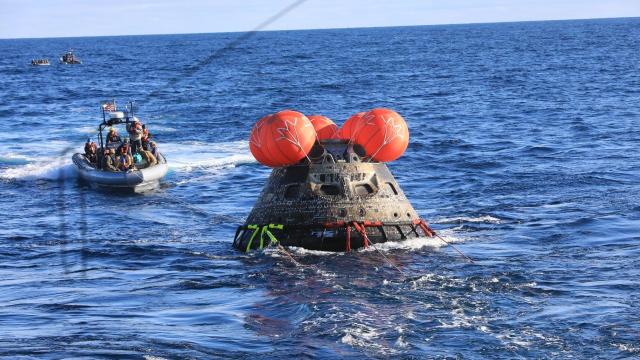Nearly a year after an uncrewed Orion splashed down in the Pacific Ocean, NASA anticipates it still needs a few more months to resolve a lingering issue with the capsule’s heat shield before a crew can ride on board.
During a recent meeting, NASA officials revealed that the space agency would not proceed with the launch of the Artemis 2 mission until it understood the problem with the heat shield and made changes, SpaceNews reported.
NASA is still studying the performance of the Orion spacecraft’s heat shield, which may take several more months to complete, according to Jim Free, associate administrator for NASA’s Exploration Systems Development Mission Directorate.
The space agency is open to replacing heat shield components or undoing some of the hardware progress on the spacecraft in order to resolve the issue, but for now the spacecraft is still being prepped for launch as it is. “We’re still pressing forward with the hardware because we don’t see a reason to stop right now,” Free said. “If we find a reason to stop, we will stop.”
Artemis 2 is scheduled for launch in November 2024. Unlike Artemis 1, the upcoming mission will carry a crew on board. The spacecraft’s heat shield is designed to protect the astronauts from extremely hot temperatures during reentry to Earth.
After the Artemis 1 mission, follow-up inspections of the capsule revealed an unexpected performance from its heat shield. During Orion’s reentry through Earth’s atmosphere, the spacecraft travelled at speeds reaching 24,600 miles per hour (39,590 kilometres per hour) and its heat shield endured temperatures above 5,000 degrees Fahrenheit. Although NASA engineers had anticipated that some charring would occur, more of the shield’s ablative material came off than they had expected.
“Some of the charred material ablated away differently than what our computer models, and what our ground testing, predicted,” Howard Hu, the Orion program manager for NASA, told reporters in March. “More of this charred material was liberated during reentry than we had expected.”
At the time, NASA launched an investigation to learn more about the heat shield’s performance during reentry. The space agency expects to get a “tentative root cause resolution” on the heat shield erosion late next spring, Lakiesha Hawkins, assistant deputy associate administrator at NASA’s Moon to Mars Program Office, said during the meeting. “We will make sure that all of us are comfortable with where they are with root cause before we start talking about flight rationale,” she added.
NASA is still working on the spacecraft’s hardware in preparation for Artemis 2 in order to keep the mission on track for a 2024 launch date. “There is continued processing of the vehicle for Artemis 2, but we’re just doing that to try to manage schedule,” Hawkins is quoted in SpaceNews as saying. “If we do need to go back, if we do need to undo things up to and including replacing heat shield components, we are entirely open to that.”
It’s still not clear whether the heat shield may affect the Artemis 2 launch date, but the crew has made it clear that they would not ride on board Orion unless it had been resolved. During a press conference in August, NASA astronaut Reid Wiseman, commander of the Artemis 2 mission, told Free, “This crew, we’re not going to launch until we know we’re ready, until our team knows that the vehicle is ready and we will keep the pressure on.”
